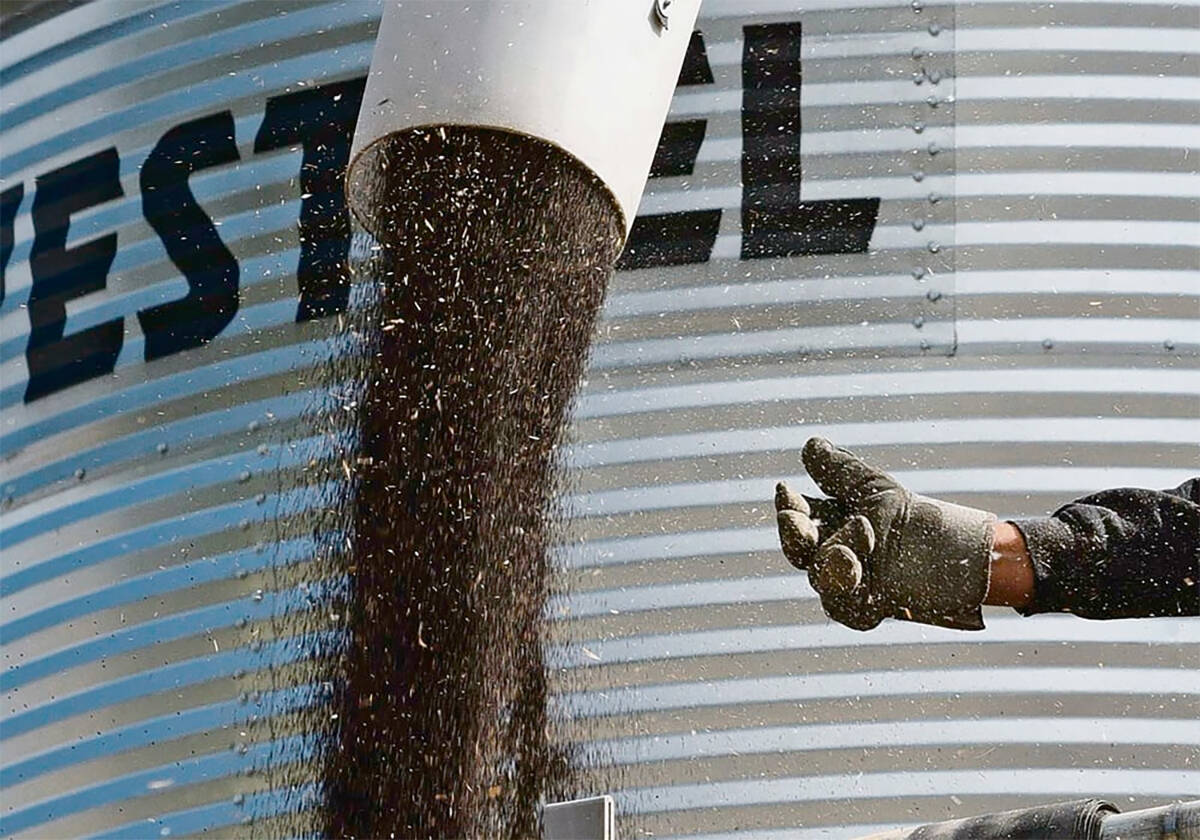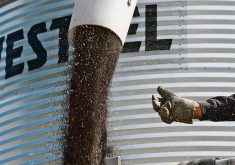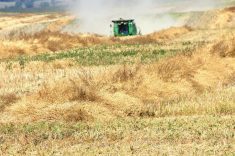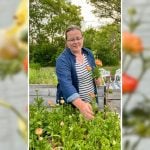This was the first year since 1974 that Greg Marshall wasn’t actively involved in farming his own land, so he welcomed the opportunity to get his hands dirty on his son-in-law’s farm near Young, Sask., come harvest time.
“It was a great opportunity to sit in a combine and enjoy a bountiful crop,” said Marshall, who still owns a farm near Semans, Sask.
“It was rewarding to see the next generation succeed in harvesting a beautiful crop. That was the best part of it.”
Read Also

Farmers urged to be grain-safe this fall
Working around grain bins comes with risk, from farmers falling to drowning in grain: Experts have five tips to help avoid grain-related accidents this harvest.
Those comments are not surprising coming from a man whose passions are family, farming and helping young people get a step ahead in life.
Marshall grew up on a mixed farm that has been in his family since his grandfather acquired it during the Great Depression.
“He took it over in 1938. That’s a great deal of optimism,” he said with a laugh.
Marshall became a full-time farmer in 1974, shortly after graduating from the University of Saskatchewan with a diploma in agriculture. By the time he retired from farming last year, the operation had expanded to about 5,000 acres of grains and oilseeds and 60 cow-calf pairs.
Today, the cattle herd has been sold, all the land has been rented out and Marshall is pursuing his second career as president of the Agricultural Producers Association of Saskatchewan.
His résumé is littered with volunteer work for groups including the Saskatchewan Life Insurance Council, the Saskatchewan Crop Insurance Corporation, the Canadian International Grains Institute, Semans United Church Board and the Raymore Agricultural Marketing Group.
Marshall attributes his passion for volunteerism to his father, who was one of the founding members of the Semans Credit Union.
“If you want to effect change, you have to be involved. You can’t be on the fringe and complaining. You’ve got to roll up your shirt sleeves and get to work and be involved,” he said.
All of the time spent travelling and attending board meetings meant more work back on the farm for the hired help, his wife, Edie, and their three children, Lori, Paul and Aaron.
“It never bothered me. I’m an active, independent person and I just would hold down the fort,” said Edie, who is a landscape painter.
She said her husband is good at dealing with people and is somebody who needs to be making a difference.
“At times on the farm, we feel rather helpless when we feel we can’t do anything. That was one way he could say that he felt like he was doing something.”
But Marshall said the most rewarding thing he has done in his life had nothing to do with farming or farm policy. It was his work as a Royal Canadian Air Cadets squadron commander in Wynyard, Sask.
“I was able to work with youth and be involved with aviation so it was a perfect fit and an extremely rewarding experience because I was able to train young people to be better citizens.”
Edie said Marshall, who got his pilot’s licence in 1976, wasn’t as concerned about instilling proper military techniques as he was about helping the kids become more confident and productive members of society.
His work training cadets came to an end about the same time he began climbing the ranks at APAS. Marshall was elected to the board of directors in 2006, served on the executive committee in 2008 and was elected president in December of that year.
His goal was to bring an end to the tumultuous leadership problems that had plagued the organization, to increase membership and to make APAS a credible voice for agriculture.
After one year at the helm, Marshall is happy with the progress that has been made.
“We’ve gained a lot of ground. We’ve fixed the problems. Everybody works together as a team. I’m very proud of the fact we’ve gained a lot of credibility,” he said.
Edie believes it has been a beneficial arrangement for both parties. It has helped ease what would have been a difficult transition from farming to semi-retired life in their new home in Regina.
“His work with APAS has been good in that it has kept him busy off the farm and sort of given him a focus,” she said.















